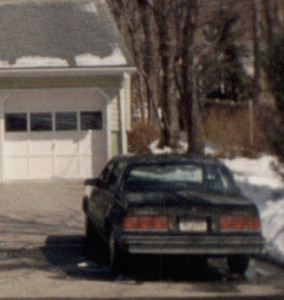This week, 7-11 gave out a free small Slurpee to all customers. Then, Chick-Fil-A celebrated the next day with “dress like a cow” day. All customers who dressed “cow-like” were given a free entrée.
Without trying to be too political for a Fantastic Friday post, I wanted to celebrate the wonders of capitalism. I know that sometimes our system of “crony capitalism” rubs people the wrong way (as it should, when certain businesses are given favors by corrupt government officials and politicians). But while I was on a road trip the other day, I listened to an NPR story about what’s happening in Venezuela, about how the instability in the country is forcing talented young folks to leave if they are able. Their socialist economy has collapsed, and people cannot secure even basic essentials. In some cases, people are so desperate for food that they wait in line even while witnessing a murder—because they cannot afford to lose their place in line.
Juxtapose that with two businesses in the course of a week vying for customer business by giving away goods. Here’s a picture of the small 7-11 parking lot, which is never crowded. This time, I had to park in a lot next door because there were no spaces left.
Are all the customers who received a free drink or a free entrée going to return and patronize those businesses? Probably not. But you can bet a good deal of them will (I’ll be one of them, but I love Chick-Fil-A’s lemonade and sweet tea so much that sometimes I dream about them!).
I’m building a gate in my back yard, and it’s amazing that I can go to Home Depot and secure a handful of various-sized screws and bolts (not sure which I’ll actually need) for a relatively inexpensive cost, along with a bag of pea gravel, a square, various sizes of wood, and several other odd but available items. All there for me at a moment’s notice. And on the way home, if I get hot or thirsty, I can stop at any convenience store or drive-thru and purchase a beverage for a dollar or two and a minute of my time.
It strikes me that capitalism—pure, unadulterated, free market capitalism—is the most hopeful type of economy. It puts faith in human beings who want to serve others the best they can and rewards them—monetarily—for doing so.
 The employees at Chick-Fil-A were all friendly and seemed happy to be there, enjoying looking at customers’ strange cow costumes. And the customers were all happy, even despite a line that wove to the end of the restaurant. When we saw how long the line was, my family and I could have easily gone down the street to McDonald’s or KFC, but everyone in line was friendly, and the employees succeeded in moving the line along in record speed—even though most of the items being ordered were free. In exchange, customers gladly spent extra money to add items to their free entrees.
The employees at Chick-Fil-A were all friendly and seemed happy to be there, enjoying looking at customers’ strange cow costumes. And the customers were all happy, even despite a line that wove to the end of the restaurant. When we saw how long the line was, my family and I could have easily gone down the street to McDonald’s or KFC, but everyone in line was friendly, and the employees succeeded in moving the line along in record speed—even though most of the items being ordered were free. In exchange, customers gladly spent extra money to add items to their free entrees.
I believe it was John Stossel who mentioned on one of his shows that a capitalist economy is the only one where you will have both customer and vendor say “thank you” to each other—because in free market capitalism, it is truly a system that works to the mutual benefit of both parties.
When humans are left alone, they strive to please each other to mutual benefit and mutual pleasure. And that’s something to celebrate.









